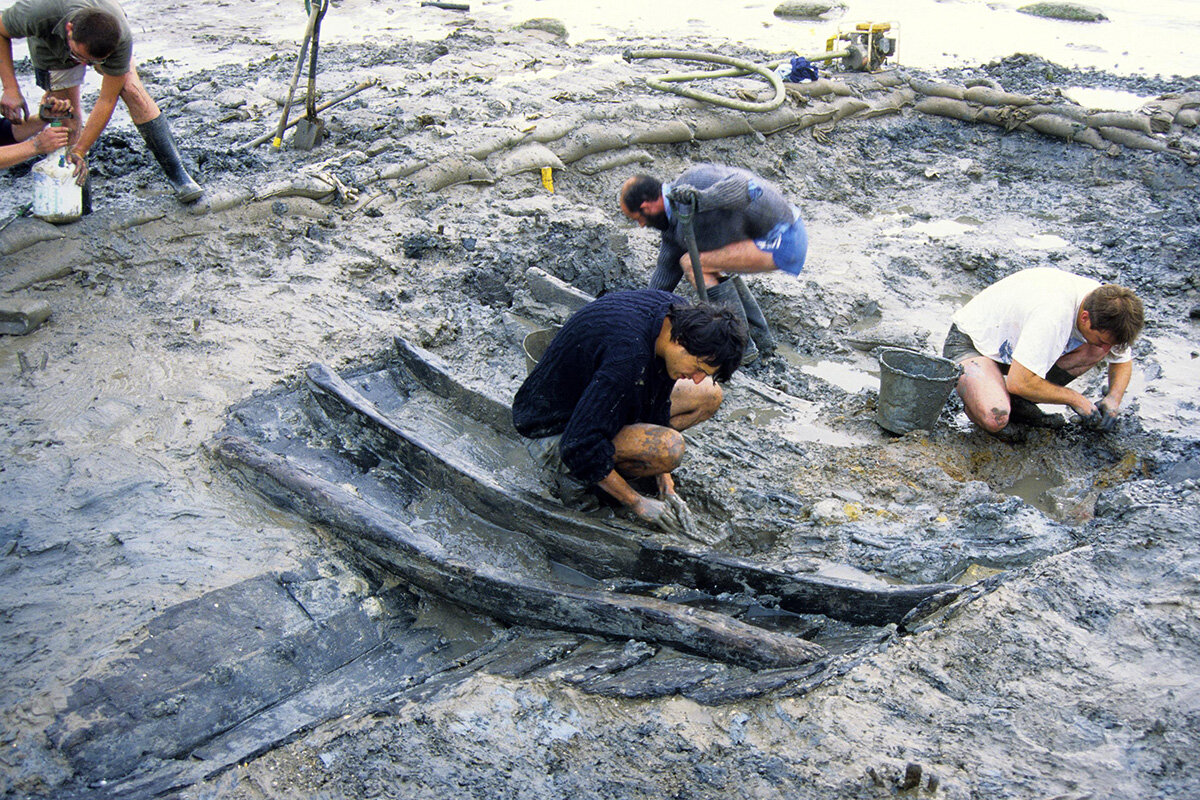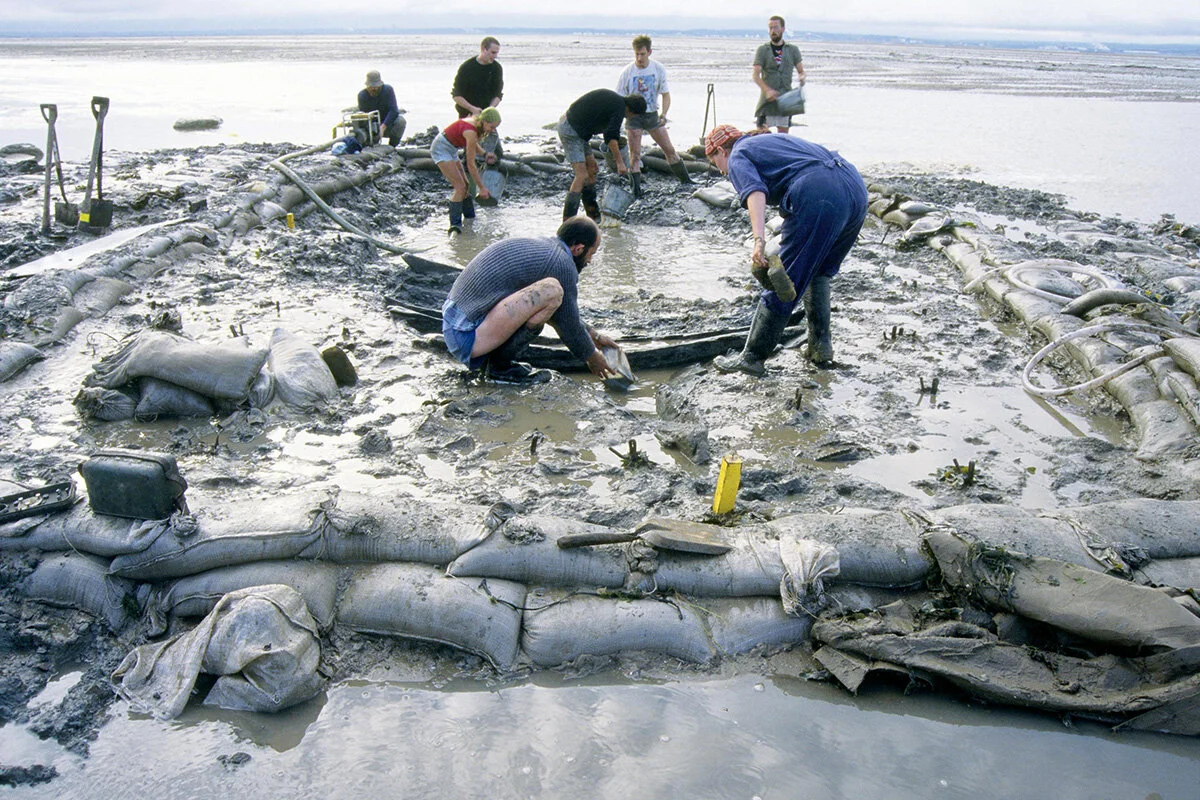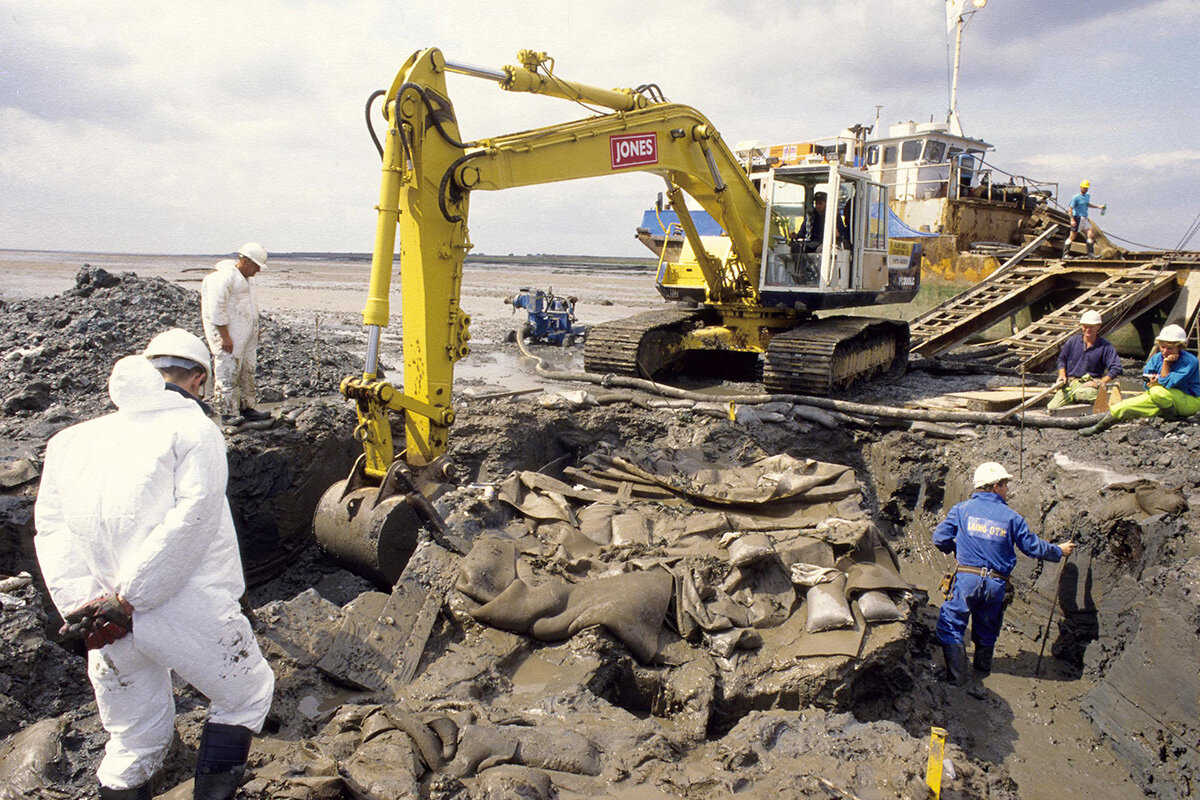Over the last few decades the Gwent Levels has yielded some incredible archaeological finds.
In 1994, local archaeologist Derek Upton made a remarkable discovery. While visiting the area with a team of archaeologists led by Rick Turner, Derek came upon the remains of a ship buried in the mud 500m from the sea wall at Magor Pill.
A sample of timber was analysed and showed that the ship had been constructed sometime in the 13th century. Boat finds from this period are extremely rare, so the decision was taken to try and recover and conserve the remains. This proved a difficult task as the site was only exposed for a maximum of two hours each side of low tide.
Raising the ship (© Amgueddfa Cymru - National Museum Wales)
The wreck was excavated and recovered by Glamorgan-Gwent Archaeological Trust (GGAT), with help from Laing-GTM, who were building the nearby Second Severn Crossing. The ships’ timbers, which were well preserved by the estuary mud, were sent to the National Museum of Wales for conservation and analysis.
Further analysis of the timbers, using tree-ring dating (dendrochronology), showed that the ship was built in AD 1239/40. The vessel was incomplete but would originally have been around 14m long, 3.7m wide and 1.2m deep. The hull was clinker built, with split oak planks fastened to each other with iron nails. Wool was used between the planks to seal them (caulking). It is estimated that it could carry cargos of up to 3.75 metric tonnes.
The ship’s shallow draft was ideal for travelling up rivers and small tidal creeks to small ports or landing places, although it may also have been capable of making sea-going voyages as far as Ireland. During the medieval period such boats would have carried goods, animals and people to seaports at Newport, Caerleon, Chepstow and Monmouth, and as far inland as Hereford along the River Wye.
The boat had some repairs during its life, most notably where a crack in a hull plank on the port side was repaired with oak laths attached from the inside.
The vessel was carrying iron ore, probably from Glamorgan, when it foundered in the creek. It is not known why it foundered, but it may have been seeking shelter from a storm, the keel may have split at a weak point, or its heavy cargo may have shifted on the wooden hurdle it was placed on, causing the boat to capsize.
At the time the ship sank, the entrance to Magor Pill was a small port or landing place on the edge of the Levels, called Abergwaitha (first recorded in 1245). The port probably served Tintern Abbey’s Lower Grange, Magor, and the surrounding area. The remains of the port have long since vanished under the muddy estuary water.
The discovery of what is now known as ‘The Magor Pill Boat’ demonstrated the importance of small ‘creek ports’ along the Severn Estuary during the medieval period, when coastal trade was dependent on small vessels. It also provided an invaluable opportunity to study the details of construction of a 13th century vessel.
Full-sized reconstruction of the Magor Pill boat remains (© Amgueddfa Cymru - National Museum Wales)
More information
Nayling, N., 1998. The Magor Pill Medieval Wreck, CBA Research Report 115. Council for British Archaeology, York.
A free copy of this report can be downloaded from the Archaeology Data Service website.
Magor Pill
Magor Pill is one of a number of ancient tidal creeks that once crossed the Levels.
Iron Age and Roman remains found at the entrance to the Pill show that it has been used for centuries as a landing place for people travelling over the estuary and as a way of travelling inland.
During the Middle Ages, a small port called Abergwaitha was situated at the entrance to the Pill. The port was probably in use up until the 16th century, when coastal erosion forced the sea wall back several hundred metres to its present line. All traces of the port have since been lost to the sea.












![Wesleyan Methodist chapel Castleton (Penny Gregson)[2].jpg](https://images.squarespace-cdn.com/content/v1/5a1d5fb38a02c70db7c34f81/fe4960cd-db68-469d-8411-f5e21327e383/Wesleyan+Methodist+chapel+Castleton+%28Penny+Gregson%29%5B2%5D.jpg)
